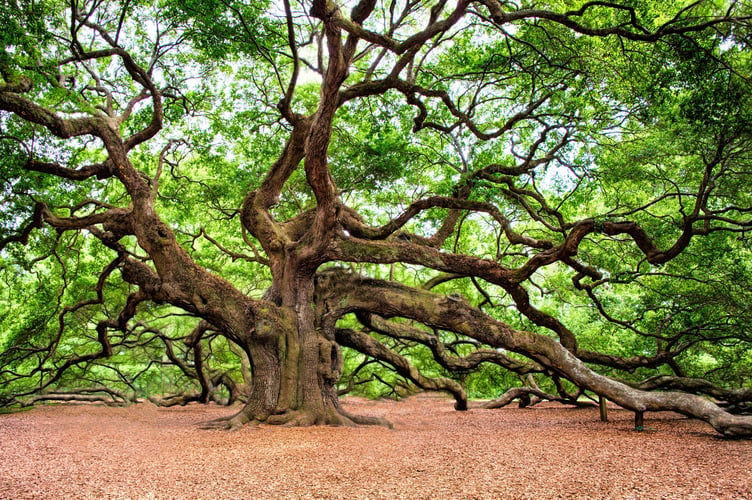Our ancient trees have been standing tall for hundreds of years, witnessing momentous events in our history. The recently felled oak in Enfield is thought to have been up to 500 years old. The Woodland Trust has identified 118 oaks in England with trunk circumferences over 9 metres, making them around 900 years old.
Ancient trees are scarce, not only because we carelessly neglect and fell them, but to achieve such longevity they are likely to have grown outside of woodland without competition from other trees. So they may be found in historic parklands, churchyards, or on ancient boundaries.
A mature tree is a remarkable organism, producing 300,000 leaves annually and pumping a hundred tonnes of water a year 30 metres up to its crown. Trees develop more character with age, with huge, hollowed out trunks, fissures in their bark and gnarly old branches.
These ancient trees offer a unique wildlife habitat that takes centuries to develop, and many species rely solely on old trees like this to survive. It is said that one ancient oak has more biodiversity than a thousand 100-year-old oaks.
Sadly, we are losing too many of our mature trees. A tree’s roots lie mostly in the top 12 inches of soil where oxygen is available and extend outwards beyond its canopy. The roots are vulnerable to disturbance and soil compaction from vehicles, farm machinery, human footfall, and livestock – a cow weighs more than half a tonne. Trees of any age benefit from protection of their roots. Clearing a circle of vegetation from around their trunks reduces competition and applying a thick organic mulch conserves water and nutrients at their base.
Although an ancient tree is an entire living system that may take centuries to replace, there is no automatic right of protection of a tree due to its age, and the majority of ancient trees in the UK are not protected. A building of the same age would almost certainly be listed, yet it is often left to local communities to fight to save important trees and not all of them succeed.
Tree Preservation Orders (TPO) only offer partial protection – planning permission overrides a TPO and can authorise the felling of a tree, and trees that are deemed dangerous or causing a nuisance can lose their TPOs.
The Woodland Trust is calling for stronger protections for Britain’s ancient trees and a report commissioned by the government following the felling of the Sycamore Gap tree recommends
new legislation. It proposes that sentencing guidelines are strengthened so those who destroy important trees face tougher criminal penalties, and that a database of ancient trees is drawn up and given automatic protections in the new planning and infrastructure bill currently going through parliament.
Ancient trees are living monuments and survivors from a time when nature was richer. We should value and protect our living heritage, if we want to see nature thrive for future generations.





Comments
This article has no comments yet. Be the first to leave a comment.